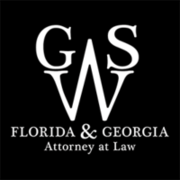
Syfert Injury Law Firm
Your Trusted Partner in Personal Injury & Workers' Compensation
Call Now: 904-383-7448
Your Trusted Partner in Personal Injury & Workers' Compensation
Call Now: 904-383-7448As used in this article, the term:
(Ga. L. 1950, p. 390, § 2; Ga. L. 1960, p. 178, § 1; Ga. L. 1976, p. 282, § 4.)
- Pursuant to Code Section 28-9-5, in 1990, "Section" was substituted for "section" in paragraphs (15) and (26).
- The Federal Insecticide, Fungicide, and Rodenticide Act and amendments thereto, referred to in paragraph (13) of this Code section, was codified at 7 U.S.C. §§ 135 through 135K. However, in 1972 the Federal Insecticide, Fungicide, and Rodenticide Act was extensively amended by Pub. L. No. 92-516. The 1972 Act, as amended, provided that the provisions of the Federal Insecticide, Fungicide, and Rodenticide Act and the regulations enacted thereunder should remain in effect until superseded by the amendments made by the 1972 Act and the regulations thereunder. See Pub. L. No. 92-516, § 4, as amended by Pub. L. No. 94-140, § 4 and Pub. L. No. 95-396, § 28. The 1972 Act has been codified at 7 U.S.C. §§ 136 through 136y and treated as a new subchapter 2 in the chapter of the U.S.C. in which the Federal Insecticide, Fungicide, and Rodenticide Act appeared. Public Law No. 92-516, § 1 provides that the short title of the 1972 Act is the Federal Environmental Pesticide Control Act of 1972.
Section 25(c)(2) of the Federal Insecticide, Fungicide, and Rodenticide Act, referred to in paragraph (15) of this Code section, is codified at 7 U.S.C. § 136w(c)(2).
The federal Endangered Species Act of 1973, referred to in paragraph (16) of this Code section, is codified at 16 U.S.C. § 1531 et seq.
Section 25(c)(1) of the Federal Insecticide, Fungicide, and Rodenticide Act, referred to in paragraph (26) of this Code section, is codified at 7 U.S.C. § 136w(c)(1).
Total Results: 1
Court: Supreme Court of Georgia | Date Filed: 2004-10-12
Citation: 604 S.E.2d 189, 278 Ga. 631
Snippet: use competitive bid process) [42] OCGA §§ 52-2-7, 52-2-9, 52-2-11, 52-2-31, 52-2-33. See Vogt, 294 F